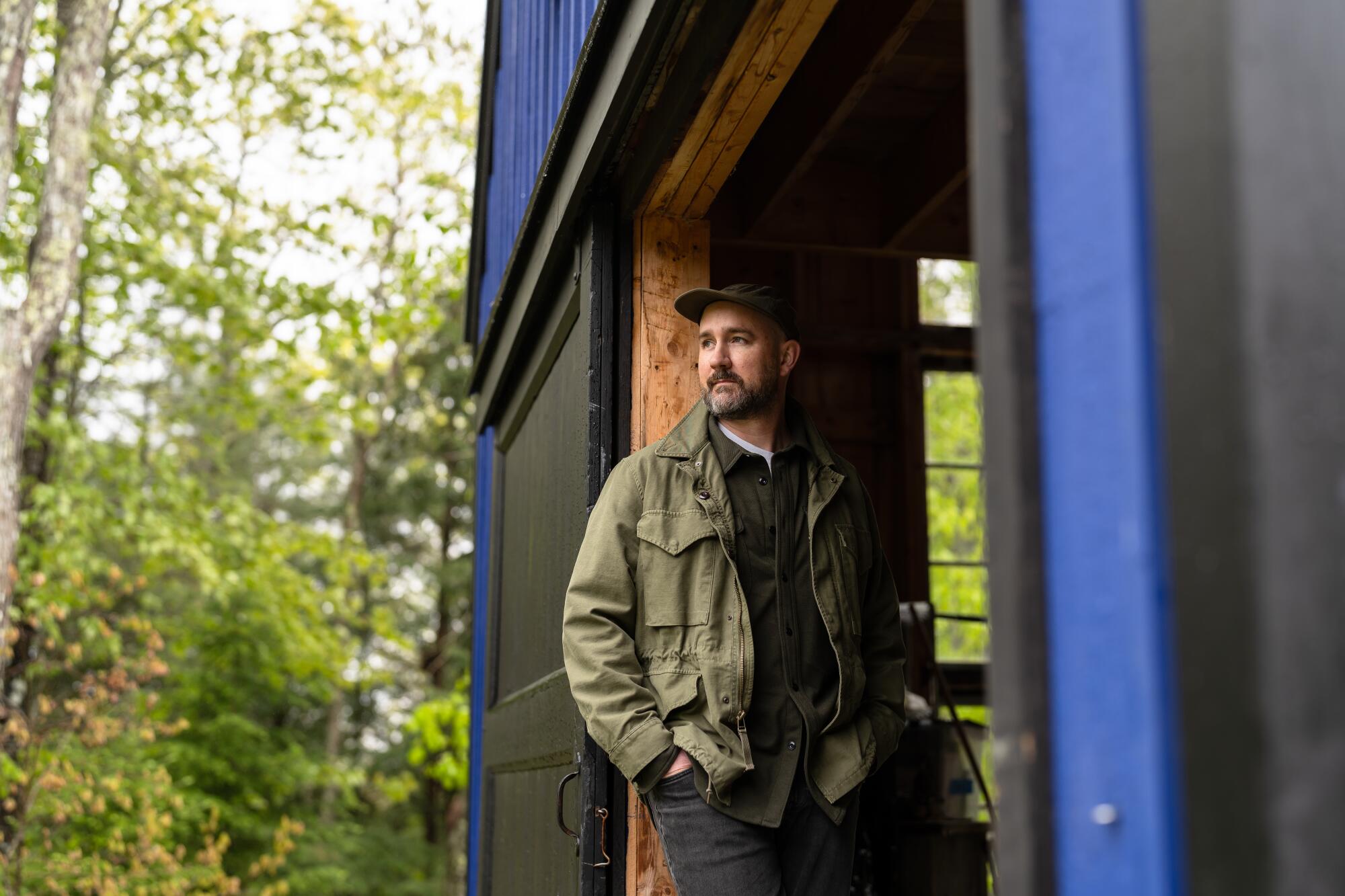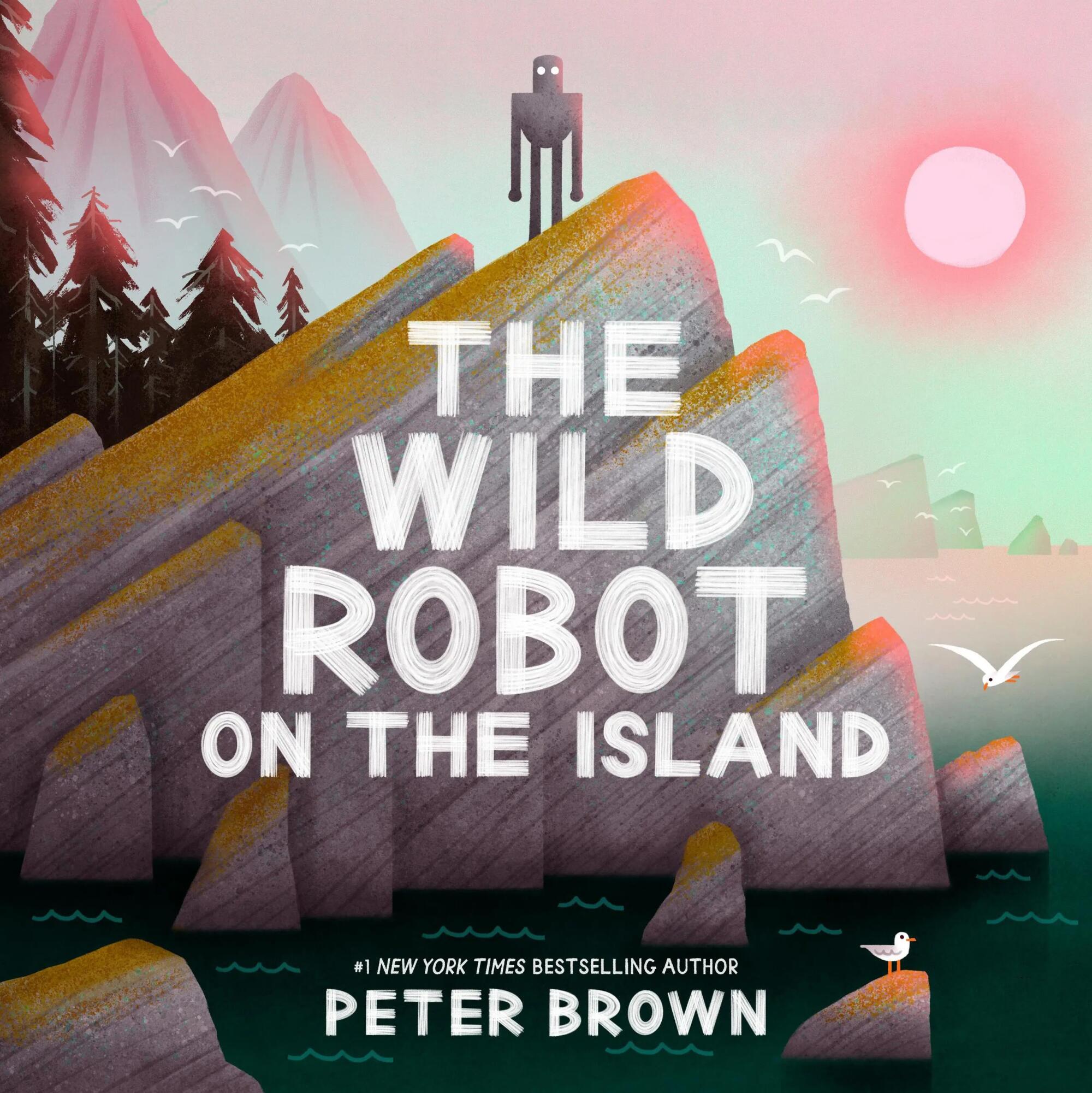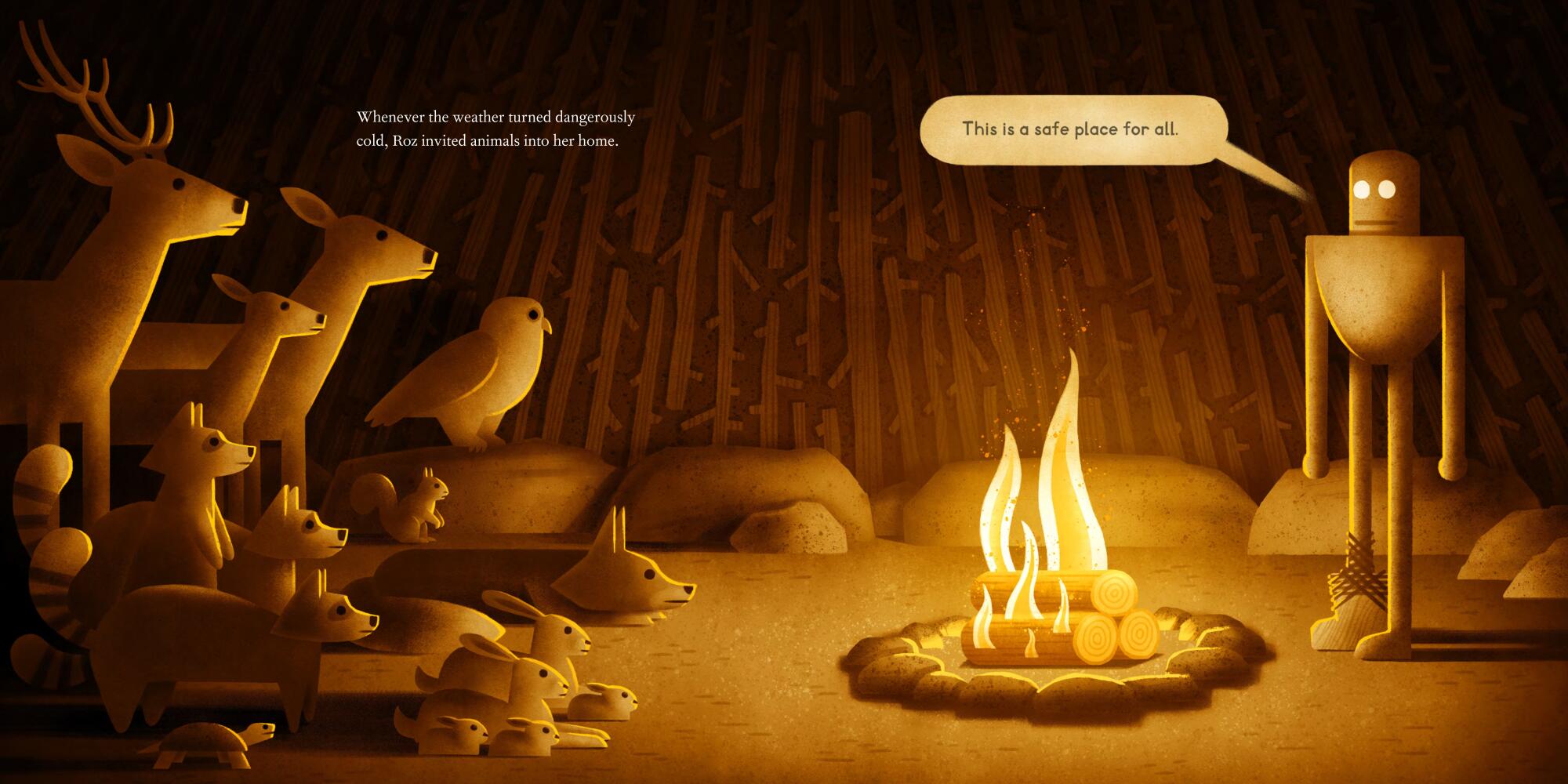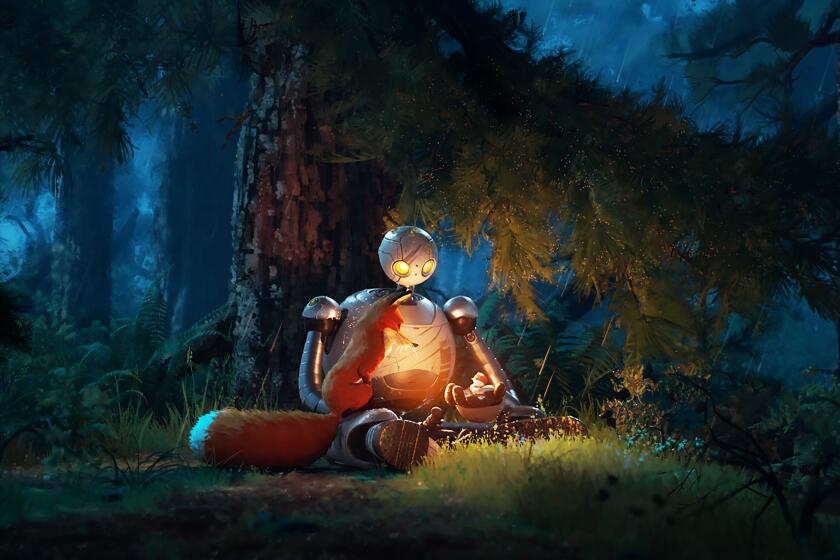
- Share via
On the Shelf
The Wild Robot on the Island
By Peter Brown
Little, Brown Books for Young Readers: 48 pages, $20
If you buy books linked on our site, The Times may earn a commission from Bookshop.org, whose fees support independent bookstores.
There are rare moments in the culture when a children’s book resonates with everyone. Parents who buy the book for their kids find themselves moved by a story that is not intended for them but somehow speaks to them. Peter Brown’s “The Wild Robot” is one such book.
A tender-hearted fable about a robot who washes ashore on a remote island and goes native, the 2016 middle-grade novel from Little, Brown Books for Young Readers has spawned two sequels and last year’s hit (and Oscar-nominated) adaptation from DreamWorks Animation, with book sales for the series topping 6.5 million worldwide. Brown has now created a picture book titled “The Wild Robot on the Island,” a gateway for those still too young to read the original work.
“This new book gave me a chance to create these big, colorful, detailed illustrations, while still maintaining the emotional tone of the novel,” says Brown, who is Zooming from the Maine home he shares with his wife and young son. “I’ve added some little moments that aren’t in the novel to give younger readers an introduction and when they’re ready, they can turn to the novel.”

The new book’s mostly-pictures-with-some-words approach is a return to Brown’s earlier work when he was creating charming fables for toddlers about our sometimes fraught, sometimes empathetic attitude toward nature. In 2009’s “The Curious Garden,” a boy encounters a patch of wildflowers and grass sprouting from an abandoned railway and decides to cultivate it into a garden, while 2013’s “Mr. Tiger Goes Wild” finds the title character longing to escape from the conventions of a world where animals no longer run free. This push and pull between wilderness and civilized life, or wildness versus timidity, has preoccupied Brown for the duration of his career, and it is what brought Brown to his robot.
“I was thinking about nature in unlikely places, and the relationships between natural and unnatural things,” says Brown, a New Jersey native who studied at Pasadena’s Art Center College of Design. “And that led to the idea of a robot in a tree.” Brown drew a single picture of a robot standing on the branch of a giant pine tree, then put it aside while he produced other work. But the image wouldn’t let him go: “Every couple of months, I would think about that robot.”
Brown began researching robots and robotics, and slowly the story gestated in his mind. “Themes began to emerge,” says Brown. “Mainly, the idea of this robot becoming almost more wild and natural than a person could be. That was so fascinating to me that I wanted to let this thing breathe and see where it took me.”
Brown knew the involved narrative he had imagined wouldn’t work in picture book form; he needed to write his story as a novel, which would be new territory for him. “When I pitched the idea to my editor, she basically said, ‘Pump your brakes,’ ” says Brown. “If I was going to write, I had to include illustrations as well. The publisher thought it was a bit of a risk. They wanted pictures in order to sell it, because of what I had done in the past.”

Brown locked himself away out in the wilds of Maine, in a cabin with no Wi-Fi, and got down to it. “I was nervous, and my editor wasn’t sure, either,” says Brown, who cites Kurt Vonnegut as a literary influence. “I realized there was no other option but for me to do it. And once I got into it, I had a blast.”
Like all great fables, Brown’s story is deceptively simple. A cargo ship full of robots goes down in the middle of the ocean. Some of these robots, still packed in their boxes, wash ashore on a remote island. A family of otters opens one such box, which turns out to be Roz, Brown’s wild robot. As Roz explores this strange new world, she encounters angry bears, a loquacious squirrel and industrious beavers, who regard her as a malevolent force. But the robot’s confusion, and the animal’s hostility, soon dissolve into a mutual understanding. Roz is the reader’s proxy, an innocent who acclimates to the complex rhythms of the natural world. Eventually she is subsumed into this alien universe, a creature of nature who allows birds to roost on her chromium shoulder.
“Roz has been programmed to learn, but her creators, the men who built her, don’t expect her to learn in this particular way,” says Brown. “And so she uses that learning ability to mimic the animals’ behavior and learns how to communicate with them. Roz is the embodiment of the value of learning, and part of that is adapting, changing, growing.”
Featuring inspired vocal performances by Lupita Nyong’o, Pedro Pascal and a deep cast of animation veterans, Chris Sanders’ warm adventure approaches sublimity.
The story isn’t always a rosy fairy tale. There are predators on the island; animals are eaten for sustenance. Real life, in short, rears its ugly head. “It gets tricky. Life is complicated, right?”, says Brown. “But thanks to Roz’s influence, all the animals discover how they are all a part of this interconnected community.”
Roz adopts an abandoned gosling that she names Brightbill, and the man-made machine is now a mother, flooded with compassion for her young charge. Their relationship is the emotional core of Brown’s series. At a time when the world is grappling with the increasing presence of robotic technology in everyday life, Brown offers an alternative view: What if we can create robots that are capable of benevolence and empathy? Roz reminds us of our own humanity, our capacity to love and feel deeply. This is why “The Wild Robot” isn’t just a kid’s book. It is in fact one of the most insightful novels about our present techno-anxious moment, camouflaged as a children’s book.

“Technology is a double-edged sword,” says Brown. “There’s obviously a lot of good that is happening, and will continue to happen, but in the wrong hands it can be dangerous.” He mentions Jonathan Haidt’s bestselling book “The Anxious Generation,” and Haidt’s prescriptions for restricting internet use among children, which Brown endorses. “I don’t have a lot of answers, but I just think we need to reinvest in our own humanity,” he says. “We have to make sure things are going in the right direction.”
In subsequent books, the outside world impinges on Roz’s idyll. “The Wild Robot Escapes” finds Roz navigating the dangers of urban life and humans with guns, while a toxic tide in “The Wild Robot Protects” leaves the animals scrambling for ever more scarce resources. None of this is pedantic, nor is it puffed up with moral outrage. Brown knows children can spot such flaws a mile away. Like all great adventure tales, Brown’s “Wild Robot” stories embrace the wild world in all of its splendor, without ever flinching away from it.
The gift of a great story starts here, with titles including picture books and YA. Reese Witherspoon and Trevor Noah are here, but so are some non-celeb authors.
“In the books, I just wanted to acknowledge that the world is complicated, and that people we think are bad aren’t necessarily so,” says Brown, who is currently writing the fourth novel in the “Wild Robot” series. “Behind every bad action is a really complicated story, and I think kids can handle that. They want to be told the truth about things, they want to grapple with the tough parts of life.”
More to Read
Sign up for our Book Club newsletter
Get the latest news, events and more from the Los Angeles Times Book Club, and help us get L.A. reading and talking.
You may occasionally receive promotional content from the Los Angeles Times.







